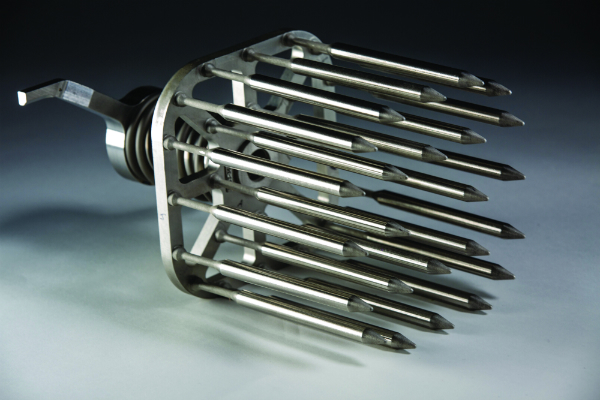 US-based Westinghouse Electric Company announced on 4 May that a 3D-printed thimble plugging device was successfully installed Exelon's Byron 1 during their spring refuelling outage.
US-based Westinghouse Electric Company announced on 4 May that a 3D-printed thimble plugging device was successfully installed Exelon's Byron 1 during their spring refuelling outage.
The thimble plugging device is used in nuclear reactors to help lower fuel assemblies into nuclear reactor cores. It is a first-of-a-kind installation for the nuclear industry.
"Our additive manufacturing programme offers customers enhanced component designs that help increase performance and reduce costs, as well as provide access to components that may not be available using traditional manufacturing methods," said Ken Canavan, Westinghouse's chief technology officer.
"Additive manufacturing is an exciting new solution for the nuclear industry," said Ken Petersen, Exelon Generation's vice president of nuclear fuels.
"The simplified approach helps meet the industry's need for a wide variety of low-volume, highly critical plant components. We are proud to have Westinghouse as a partner on this industry milestone and to help further demonstrate the viability of this technology."
It is the result of three years of development. Westinghouse first discussed its ambition to produce a thimble plugging device in stainless steel 316L using metal powder bed fusion technology in 2017.
The company considered the component to be a low-risk application of 3D printing technology, as it would have minimal consequences should the part not perform as expected.
At the time, the nuclear industry had no direct radiation experience with additively manufactured materials. Westinghouse was one of the first to attempt production of a 3D printed component intended for a commercial nuclear reactor. The company had mini-tensile specimens of Stainless-Steel Alloy 316L and Inconel Alloy A718 additively manufactured for testing. A laser powder-bed system was leveraged for the production because it fuses layers of powdered metal.
Photo: Westinghouse Thimble Plugging Device (Credit: Westinghouse)






